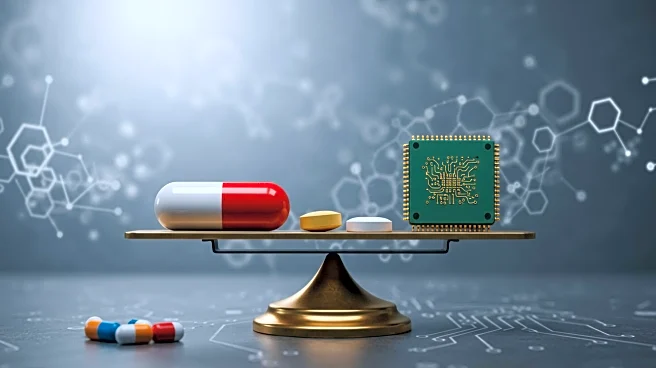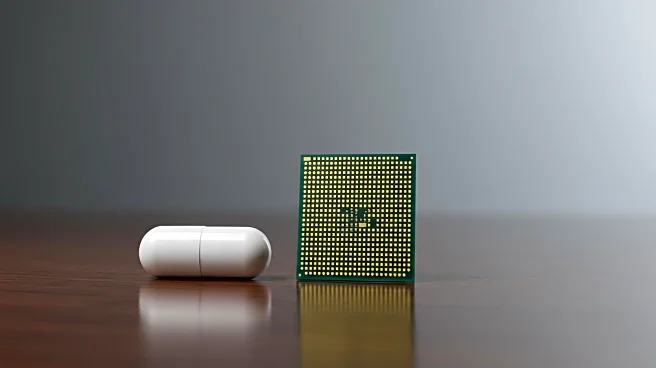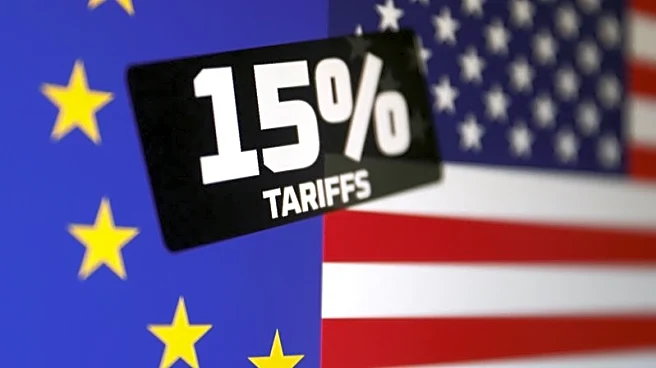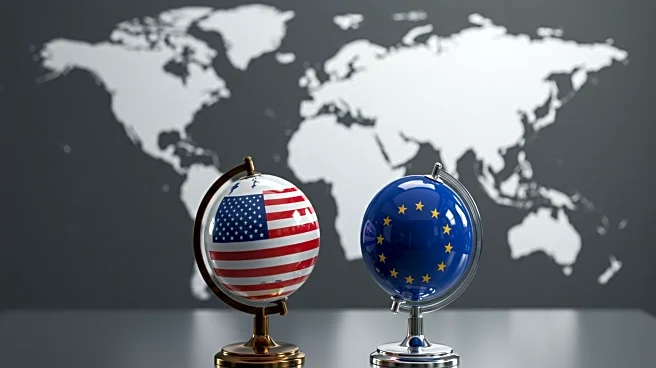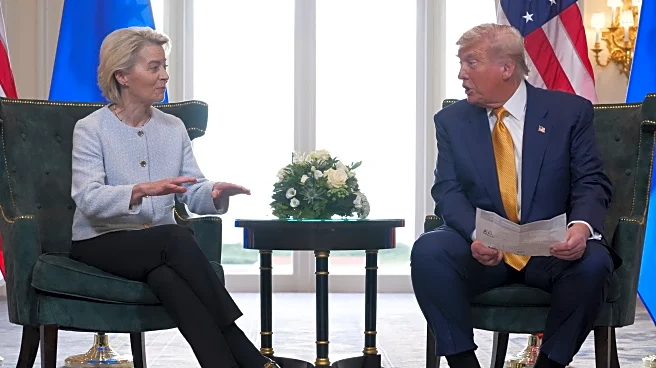What's Happening?
The United States and the European Union have reached a new trade agreement that limits tariffs on pharmaceuticals, lumber, and semiconductors to 15%. This agreement follows President Trump's previous threats to impose tariffs as high as 250% on European pharmaceutical products and 100% on semiconductors. The deal also includes commitments from the E.U. to purchase energy and artificial intelligence technology from the U.S., with European companies planning to invest an additional $600 billion in strategic sectors by 2028. The U.S. will roll back tariffs on certain natural resources and aircraft parts to pre-January levels starting September 1.
Why It's Important?
This agreement is significant as it eases trade tensions between the U.S. and the E.U., potentially stabilizing markets for pharmaceuticals and semiconductors. By reducing tariffs, the agreement may lower costs for U.S. consumers and businesses relying on these imports. Additionally, the E.U.'s commitment to invest in U.S. sectors could bolster economic growth and innovation. The deal reflects a strategic partnership that may influence global trade dynamics, particularly in technology and energy sectors.
What's Next?
The implementation of the tariff reductions is set to begin on September 1, which may prompt reactions from industries affected by the changes. Stakeholders in the pharmaceutical and semiconductor sectors will likely monitor the impact on pricing and supply chains. The agreement could also lead to further negotiations on trade policies between the U.S. and E.U., potentially expanding cooperation in other areas.
Beyond the Headlines
The agreement may have broader implications for international trade relations, setting a precedent for resolving tariff disputes through negotiation rather than unilateral actions. It could also influence other countries' trade strategies, particularly in sectors like technology and energy, where global competition is intense.
